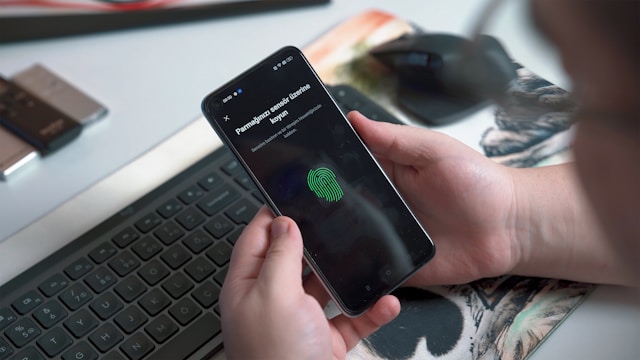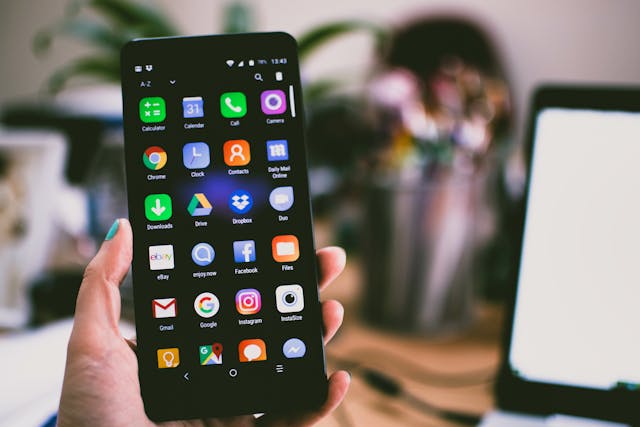Top 10 Tips To Ensure Security For Android Mobile Apps
In today's digital age, our smartphones have become extensions of ourselves, containing a wealth of personal and sensitive information. With Android devices dominating the mobile market, ensuring the security of the Android mobile apps installed on these platforms is important. If you are a developer crafting the next big app, here are the ten crucial tips to fortify Android mobile app security.
1. Embrace Encryption
Embracing encryption is important in safeguarding sensitive data within Android mobile apps. By encrypting data at rest and in transit, developers can prevent unauthorized access attempts and protect user credentials from prying eyes. Leveraging robust encryption algorithms like AES fortifies data integrity, ensuring that the information remains unreadable and secure even if intercepted.
Furthermore, encryption not only bolsters security but also instills trust among users. Developers can assure users that their data is handled with the utmost care. By prioritizing encryption as the first line of defense, developers demonstrate a commitment to safeguarding user privacy and confidentiality. As cyber threats continue to evolve, robust encryption measures serve as a cornerstone in fortifying Android mobile apps against potential vulnerabilities.

2. Implement Secure Authentication Mechanisms
Implementing secure authentication mechanisms is crucial for bolstering the defense of Android mobile apps against unauthorized access. Traditional password-based methods, while still prevalent, are increasingly vulnerable to exploitation by malicious actors. By integrating multi-factor authentication (MFA) or biometric authentication, such as fingerprint or facial recognition, developers can introduce additional layers of security. These layers can significantly enhance the app's resilience to unauthorized access attempts. MFA requires users to provide two or more forms of identification, such as a password combined with a unique code sent to their registered email or mobile device. Similarly, biometric authentication leverages the unique biological characteristics of individuals, such as fingerprints or facial features, to authenticate users with a high degree of accuracy. These advanced authentication mechanisms not only fortify app security but also offer users a seamless and convenient experience.

3. Regularly Update Dependencies and Libraries
Regularly updating dependencies and libraries is imperative for maintaining the security posture of Android mobile apps. As the digital landscape evolves, so do potential vulnerabilities and exploits within the frameworks and libraries utilized in app development. By monitoring security advisories from reputable sources, developers can stay abreast of emerging threats and promptly address any identified vulnerabilities. Timely patching and updating of dependencies not only mitigate the risk of exploitation but also demonstrate a commitment to proactive security practices.
Failure to update dependencies and libraries leaves apps susceptible to known vulnerabilities that could be exploited by cybercriminals. With the proliferation of automated scanning tools and exploit kits, outdated dependencies present low-hanging fruit for attackers seeking to exploit known weaknesses. By prioritizing regular updates and patches, developers not only safeguard their apps against potential security breaches but also adhere to industry best practices for secure software development. Additionally, maintaining an updated ecosystem of dependencies ensures compatibility with the latest security protocols and standards. It can then bolster the app's overall security posture and enhance user trust in the app's reliability and integrity.
4. Employ Proper Session Management
Effective session management is vital to prevent unauthorized access to user sessions, which could lead to sensitive data breaches. By utilizing secure session tokens and enforcing strict expiration policies, developers can minimize the risk of session hijacking. Additionally, implementing robust mechanisms to detect and prevent session fixation attacks enhances the overall security posture of Android mobile apps, providing users with a safer and more trustworthy experience.
5. Apply Robust Code Obfuscation Techniques
Applying robust code obfuscation techniques is crucial for safeguarding the intellectual property and sensitive data contained within Android mobile apps. Code obfuscation involves transforming the source code of an application into a more complex and unintelligible form, making it arduous for malicious actors to reverse engineer the app and extract valuable information. For example, developers can rename classes, methods, and variables to obscure their original meaning and purpose. By obfuscating code, developers can significantly increase the effort required for reverse engineering, deterring potential attackers and safeguarding proprietary algorithms, security mechanisms, and other critical logic embedded within the app.
Furthermore, code obfuscation not only enhances security but also mitigates the risk of unauthorized modifications or tampering with the app's functionality. By concealing critical logic and obfuscating sensitive code segments, developers can prevent attempts to manipulate the app's behavior or inject malicious payloads. For instance, obfuscating code related to authentication mechanisms or encryption algorithms makes it challenging for attackers to identify vulnerabilities or exploit weaknesses. By integrating robust code obfuscation techniques into the app development process, developers can enhance the resilience of their Android mobile apps against reverse engineering attempts.
6. Adopt Secure Network Communication Protocols
Adopting secure network communication protocols, such as HTTPS, is important for safeguarding data transmitted between Android mobile apps and external servers. By implementing HTTPS, developers ensure that sensitive information remains encrypted during transit. It prevents potential interception or eavesdropping attempts by malicious actors. Additionally, proper SSL/TLS certificate validation is essential to authenticate the server's legitimacy, mitigating the risk of man-in-the-middle attacks. By prioritizing secure communication protocols, developers can protect user privacy and data security.

7. Implement Runtime Application Self-Protection (RASP)
Implementing Runtime Application Self-Protection (RASP) solutions represents a proactive approach to bolstering the security of Android mobile apps. These solutions offer real-time threat detection and mitigation capabilities directly within the app. They can help to defend against various runtime attacks, such as code injection and tampering. By continuously monitoring app behavior and detecting anomalies, RASP solutions can swiftly identify and respond to potential security threats, minimizing the risk of exploitation. For example, RASP can detect and block suspicious activities, such as unauthorized access attempts or abnormal data access patterns, before they can inflict damage. By integrating RASP into the app's defense strategy, developers can enhance its resilience against evolving cybersecurity threats.
8. Conduct Regular Security Audits and Penetration Testing
Conducting regular security audits and penetration testing is essential for maintaining the robustness of Android mobile apps against evolving cyber threats. These proactive measures involve systematically assessing the app's security posture to identify vulnerabilities and weaknesses. By engaging in comprehensive security testing, which encompasses both static and dynamic analysis, developers can gain valuable insights into potential attack vectors and vulnerabilities across the app's codebase and infrastructure. For instance, static analysis examines the source code for potential security flaws, while dynamic analysis assesses the app's behavior under various conditions to uncover runtime vulnerabilities. These practices demonstrate a commitment to continuous improvement and adherence to best practices in secure software development, instilling confidence among users in the app's reliability.
9. Follow the Principle of Least Privilege
Following the principle of least privilege is a fundamental strategy for enhancing the security posture of Android mobile apps. By strictly limiting the app's access to sensitive resources, developers can mitigate the potential impact of security breaches or exploitation. For example, an app designed for photo editing should only request access to the device's camera and photo library, rather than requesting unnecessary permissions such as access to contacts or location data. By adhering to the principle of least privilege, developers minimize the attack surface and reduce the likelihood of unauthorized access or data leakage, thereby enhancing the overall security and privacy of the app.
10. Educate Users on Security Best Practices
Educating users on security best practices is essential for fostering a safer digital environment. By offering comprehensive guidance on password management, including the importance of creating strong, unique passwords and utilizing multi-factor authentication, users can better protect their accounts from unauthorized access attempts. Additionally, educating users about app permissions ensures they understand the implications of granting access to their personal information and allows them to make informed decisions. Emphasizing the significance of regular app and system updates highlights the critical role of patching known vulnerabilities to mitigate security risks effectively. By prioritizing user education on security best practices, developers can empower users to actively participate in safeguarding their data and privacy.

Conclusion
In conclusion, securing Android mobile apps requires a comprehensive approach that encompasses various practices, such as robust encryption, regular updates, and many more. By prioritizing security throughout the app development lifecycle and empowering users with knowledge, developers and end-users alike can mitigate the risks posed by cyber threats and enjoy a safer mobile experience. Remember, when it comes to mobile app security, proactive measures are paramount.
Want to know how Appnicorn can assist you in your mobile app development? Feel free to contact us for more information.